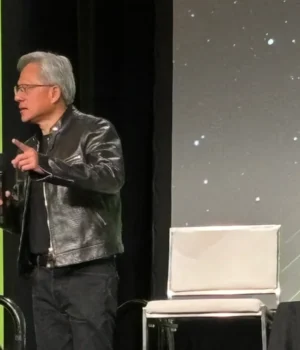
Some of the world’s leading chipmakers, including AMD and NVIDIA, continue to rely on overseas manufacturing through long-standing partnerships with Taiwan Semiconductor Manufacturing Company (TSMC) even with potential tariffs looming. However, some of these companies are embracing chip manufacturing within the US; for instance, AMD and NVIDIA are working with TSMC’s expanding US footprint albeit using the manufacturing prowess of TSMC in different ways.
AMD’s EPYC processor
Originally based in Taiwan, TSMC has expanded its operations with a new semiconductor facility in Phoenix, Arizona; this is where TSMC and AMD validated the silicon of their fifth-generation EPYC processor, ultimately paving the way for US-based EPYC CPU production.
More recently, AMD obtained its first batch of 2nm-class silicon — a crucial component of the company’s upcoming sixth-generation EPYC processor. Codenamed “Venice,” the processor is expected to be the industry’s first-high performance computing HPC CPU built using TSMC’s advanced N2 process technology.
“TSMC has been a key partner for many years, and our deep collaboration with their R&D and manufacturing teams has enabled AMD to consistently deliver leadership products that push the limits of high-performance computing,” said Dr. Lisa Su, CEO and chair of AMD.
NVIDIA’s AI supercomputers
The team at NVIDIA is working with the TSMC plant in Phoenix, too. Not only is NVIDIA using the facility to build and test its latest Blackwell chips, but the company also announced plans to expand into Texas.
Specifically, NVIDIA is expected to build new facilities in Houston and Dallas within the next 12-15 months. When complete, these assembly sites — built in collaboration with Foxconn and Wistron — will support NVIDIA’s efforts to manufacture and deploy 100% of its AI supercomputers domestically.
A recent blog post by the NVIDIA team reads, in part: “Within the next four years, NVIDIA plans to produce up to half a trillion dollars of AI infrastructure in the United States through partnerships with TSMC, Foxconn, Wistron, Amkor and SPIL.”
How long will production for AMD and NVIDIA remain in the US?
The reciprocal tariffs introduced by the Trump administration seem to be evolving on a daily basis. Whether AMD and NVIDIA will resume overseas manufacturing during the next presidential administration is uncertain, but, considering both companies’ investments in the US, the shift toward domestic production appears to be more than just a short-term play.











